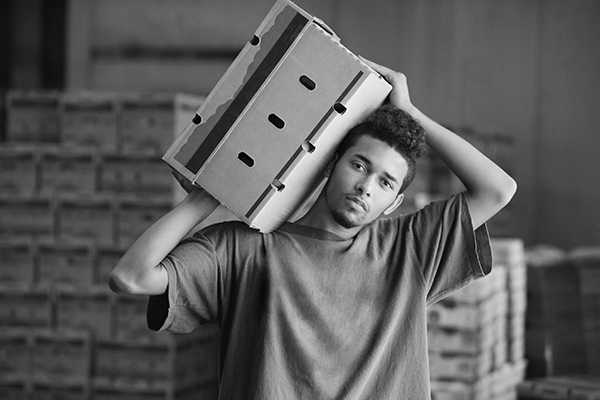In this blog I look at the importance of woodwork in early childhood education – building confidence, especially creative and critical thinking skills well as providing a foundation for lifelong learning and incorporating all curriculum areas.
‘As children make with wood they are learning skills that will empower them to shape their world’
Today in the UK the majority of children will have no experience working with real tools in their entire education. This is clearly a disservice to children as many jobs require the skilled use of tools. It is seldom encountered in primary schools as part of D&T, the majority of schools avoid work with resistant materials. In secondary schools the current picture is bleak. Less than half of secondary schools offer D&T anymore as a GCSE subject, and nearly every week there is another school that cuts its provision. This erosion was hastened in 2004 as D&T was no longer compulsory, and then the status of D&T was diminished further by not being an EBacc subject, and many schools, academies and MATs are discontinuing to provide D&T. This decline is currently happening at an alarming rate. On the other hand the government is emphasising the fact that we need more pupils going on into engineering, manufacturing, design and innovation industries.
This has left many children with having no experience at all of working with tools in their entire education. This is clearly a disservice to children, with many being denied this opportunity unless they are fortunate to be able to learn these skills in the home environment. Many children will need practical skills to work as electricians, scientists, plumbers, technicians, carpenters, builders, dentists and mechanics etc. There are a vast number of jobs in which the ability to be competent with tools plays an important element, from creating prototypes in engineering and technology to using medical instruments in surgery or dentistry. Recently several universities have published reports about prospective students missing the practical skills set that provide a foundation for theory, skills that are particularly relevant to subjects such as engineering, product design and science. Practical skills with tools are also immensely useful to us all in our daily lives, be it doing DIY projects, undertaking hobbies or making repairs.
Currently we are beginning to see a changing tide – starting from the early childhood sector – in nursery schools and reception classes. A noisy revolution is taking place! - It wonderful to see this renewed and growing interest. Many are surprised by the idea of young children working with real tools. Woodwork actually has a long heritage in early childhood education going right back to the days of Froebel’s Kindergarten (mid 1800’s), but woodwork was nearly completely eradicated in the 80s and 90s with the onerous culture of risk aversion and over-zealous safety concerns which were fuelled by the litigation culture. Fortunately the current thinking around risk has become more balanced. This turn-around started with Lord Young’s review of Health and Safety (Common Sense, Common Safety) in 2010 and since then the HSE, DoE and OFSTED have all advocated a more balanced attitude to risk. The prevailing current thought is that children need opportunities to experience risk, learning to self-risk assess rather than be over-protected and wrapped in cotton wool. In recent decades it had almost disappeared but it is now making a comeback, with renewed interest from many schools.
I am on a mission to promote woodwork in early childhood settings and primary schools – I’d love for all children to be able to gain from the rich opportunities woodwork provides. I have worked alongside children of all ages and witnessed just how empowering it can be for children to work with wood. I now regularly deliver training, speak at conferences and also provide many free resources for teachers on my website https://irresistible-learning.co.uk/resources/ I have written ‘Learning Through Woodwork’ (Routledge) and many journal articles. I am currently coordinating the Big Bang Research Project – gathering data on the impact of woodwork on children’s learning and development (University of Bristol). Over the last two years I have also undertaken international research as part of a Churchill Fellowship – looking at examples of best practice in the USA., Nordic Counties, NZ and Japan.
There is something really special about woodwork. It is so different from other activities. The smell and feel of wood, using real tools, working with a natural material, the sounds of hammering and sawing, hands and minds working together to express their imagination and to solve problems, the use of strength and coordination: all combine to captivate young children’s interest. It provides a truly unique experience.
But what about the safety I can hear you say! Woodwork is actually a low-risk activity as long as some basic safety measures are put in place and appropriate tools are used. Children’s behaviour is exemplary at the woodwork bench – they are engaged and doing something they enjoy. It is also important that children get to experience risk and challenge within a controlled environment so they learn to make decisions and judgments themselves and thus will be more able to protect themselves in new circumstances. This is an important aspect of child development.
Today, teachers who provide woodwork, regularly observe exceptional levels of engagement, with deep focus and concentration accompanied with persistence and perseverance with challenging tasks – especially with complex problem-solving. Woodwork is a wonderful medium for expressive art and creative design and it also has the benefit of encompassing many other areas of learning and development providing a truly cross-curricular activity. Mathematical thinking is developed, scientific knowledge is gained, technological understanding is developed through working with tools, and children become engineers as they construct. Woodwork is exceptional for developing children’s creative and critical thinking skills as children tinker and experiment with the possibilities of wood and tools and then go on to express ideas and resolve their work. Woodwork is not about what children make – it is all about the changes that are happening within the child. Woodwork has a significant impact on children’s self-esteem and confidence and it develops a sense of agency – that “can-do” mindset.
Woodwork is a medium for children to express their creativity and imagination. It is important not to set projects whereby all the children create the same object. The secret to children remaining really engaged in woodwork is that they are following their own interests and solving their own problems to create their work. All exploration becomes more meaningful when it has been initiated and is led by children. By building their creative and critical thinking skills they will be laying the foundations to become the creative innovators of the future.
Initially, their work is often purely experimental – tinkering with the possibilities of the materials and tools. Children then go on to express their imagination in a variety of creative ways by producing work that they personally find interesting. They gravitate to more complex constructions ranging from literal work to representational and more abstract work.
Design and practical skills are combined in the woodwork process. Design involves defining the task, making a plan of action, deciding how to proceed, and refining and responding accordingly as the work evolves. The practical skills or craft transform the designs into things. These processes go back and forth as work is often fluid and evolving as children adapt, refine and change it as it progresses. Older children may also wish to draw some initial designs to help articulate their ideas.
The success of many nursery school re-establishing woodwork is having a knock on effect with increasing numbers of primary schools now showing an interest in developing their provision. As a medium for expressive art and design the possibilities are endless and it provides so many connections with other areas of learning. It does take some effort establishing woodwork but when you see the children’s enthusiasm and exceptional levels of focus and engagement and the enjoyment and pride in their work it makes all the investment seem very much worthwhile.
It is wonderful to see the growing enthusiasm for woodwork right across the United Kingdom within the early years sector. Working with real tools offers children new experiences and encompasses all areas of learning and development. Woodwork allows children to become the innovators, makers, sculptors, tinkerers, engineers and architects of tomorrow. The experience of working with wood leaves a deep memory. Once having learnt how to work with tools they become a part of children’s DNA.
It would be wonderful if every child could have these experiences. As a teacher, it is a joy to see children so deeply focussed on an activity, witnessing their growing confidence, their persistence with challenge and their resilience in the face of failures. It is a delight to watch their creativity, observe their problem solving and see their pride in their achievements.
As children make with wood they are learning skills that will empower them to shape their world. Let’s provide all children with this valuable opportunity.
I have founded ‘The Big Bang Project’, and am establishing the Early Childhood Woodwork Association (https://earlychildhoodwoodwork.org/ ) to actively promote woodwork, to both schools and policy makers and hopefully bring the wonder of woodwork to more children – as part of this I intend to develop more free resources for teachers especially free training videos.
Pete Moorhouse (studio@petemoorhouse.co.uk)
Related articles
-
Working towards an improved Fellowship experience
Lucy Griffiths FRSA
The Fellowship Roadmap project commenced in March 2020 with the aim aim of better understanding the RSA Fellowship’s needs.
-
Announcing the Covid-19 Catalyst Award funded projects
Kimberley Staines
20 impactful projects run by RSA Fellows and funded by the RSA to respond to the effects of Covid-19.
-
Covid-19 and good work: stories from Catalyst grant winners
Emma Morgante
Winners of an RSA grant to deal with the impact of Covid-19 on the world of work.




Join the discussion
Comments
Please login to post a comment or reply
Don't have an account? Click here to register.
Anthony Constantinou (CWM FX) says, "Sometimes, teachers often have bias view regarding creative students, frightening that creativity in the classroom will be disrupting. They hold back creativity by aiming on the imitation of knowledge and obedience in class." But this is simply awesome...